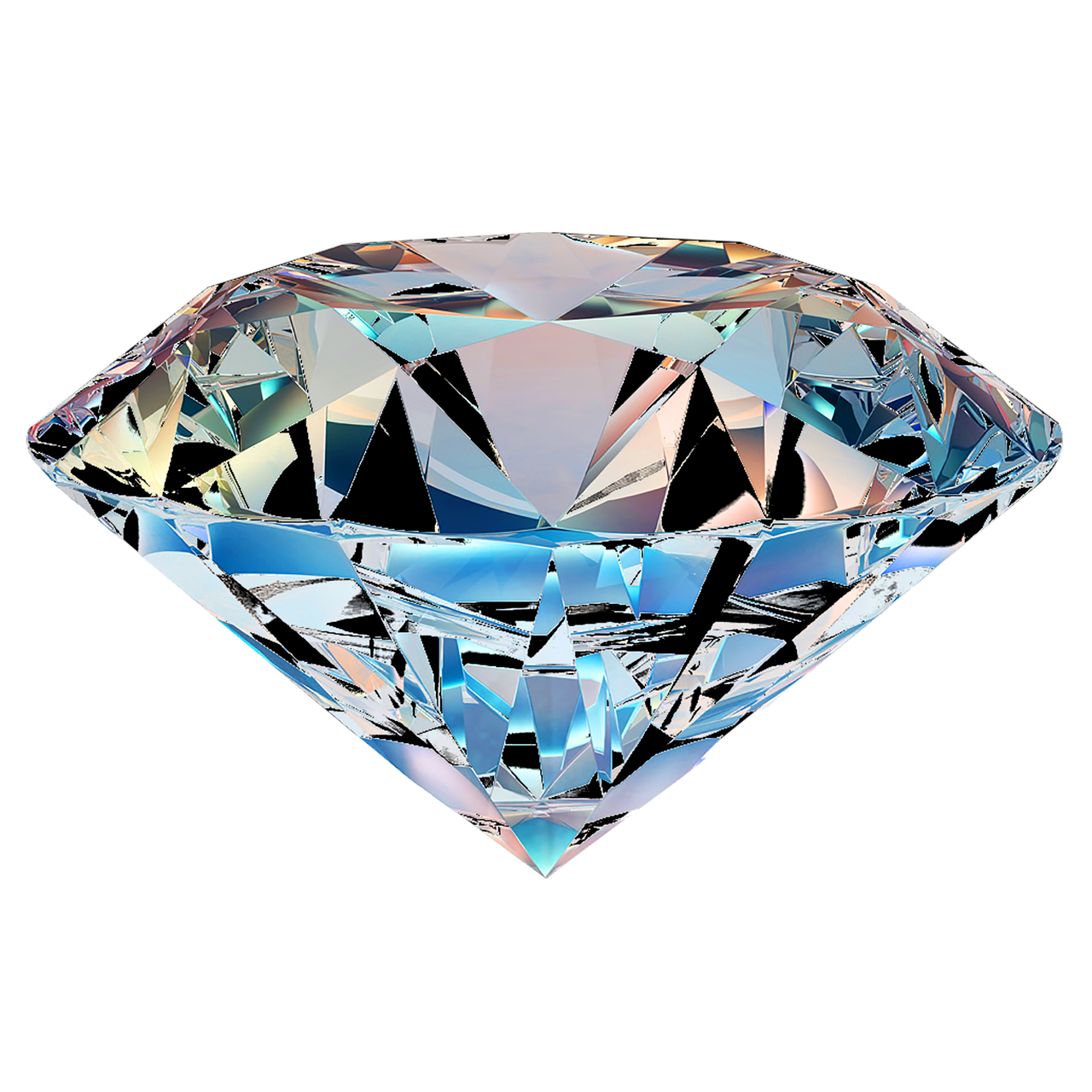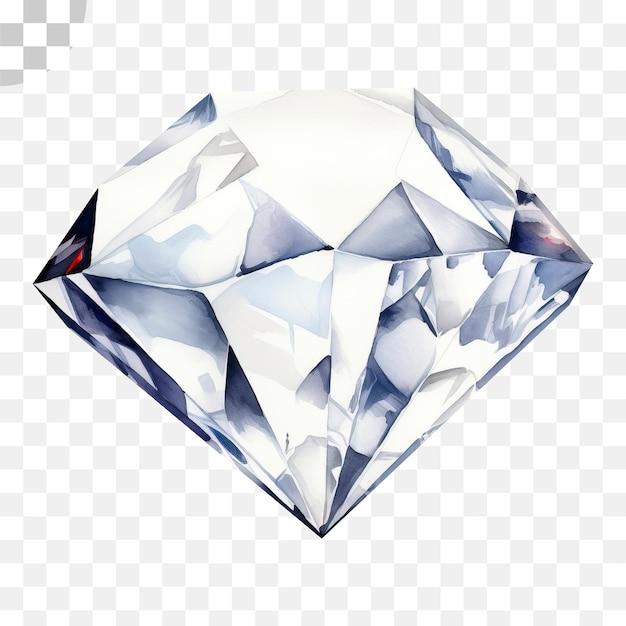Diamonds have long been coveted for their sparkling beauty and undeniable allure. But have you ever wondered about the transparency of a diamond? How clear is it really? Are all diamonds equally transparent? These are common questions that many people have when it comes to these precious gemstones.
In this blog post, we will delve into the world of diamond transparency and explore what it means for a diamond to be transparent. We will discuss the factors that determine the transparency of a diamond, and why some diamonds may appear cloudy or lack that dazzling shine. We will also answer other related questions, such as how jewelers can determine if a diamond is lab-created and how to keep your diamond from getting cloudy. So, let’s uncover the mysteries behind diamond transparency and discover what makes these gemstones shine so brilliantly.
What Is the Transparency of a Diamond
Diamonds are known as the glimmering treasures that make hearts skip a beat. But have you ever wondered what gives these precious stones their extraordinary brilliance? Well, my friend, it all boils down to one crucial characteristic: transparency. Now, don’t worry if you’re scratching your head wondering what transparency has to do with diamonds. I’m here to shed some light on this dazzling topic.
The See-Through Secrets of Diamonds
When we talk about the transparency of a diamond, we’re referring to how easily light can pass through it. Think of transparency as the “see-through factor.” The more transparent a diamond is, the clearer and brighter it appears. It’s like having a crystal-clear window into the heart of this sparkling gem.
The Diamond Clarity Scale: Decoding Transparency
To understand the transparency of a diamond, we need to dive into the world of the diamond clarity scale. This scale, developed by the Gemological Institute of America (GIA), grades diamonds based on their flaws or lack thereof. These flaws, often called inclusions and blemishes, can affect a diamond’s transparency.
Flawless: Like a Smooth Criminal
At the top of the diamond clarity scale, we have the elusive Flawless grade. Diamonds in this category are as rare as a unicorn sighting. They are free from any inclusions or blemishes, allowing light to pass through easily. A Flawless diamond is so transparent that it could give the windows of the poshest skyscrapers a run for their money.
VVS: Very, Very Slightly Included
If a diamond doesn’t quite make the Flawless cut, it can still rock the VVS (Very, Very Slightly Included) grade. VVS diamonds have microscopic inclusions that are barely visible under 10x magnification. It’s like finding a needle in a haystack, only to realize the needle is actually a speck of dust. These diamonds boast excellent transparency, making them a real showstopper.
VS: Very Slightly Included
Diamonds falling into the VS (Very Slightly Included) category possess inclusions that are slightly more noticeable than VVS diamonds but still require magnification to be seen. It’s like discovering a small smudge on your favorite sunglasses, but it’s too tiny to dim your view. Despite their minor flaws, VS diamonds maintain exceptional transparency and offer tremendous value.
SI: Slightly Included
SI (Slightly Included) diamonds are the next stop on our transparency journey. Their inclusions are more obvious when inspected closely, but fear not, my friend, as these stones still possess remarkable transparency. It’s like finding a scratch on your phone’s screen protector, but it’s not large enough to ruin your Instagram-perfect selfies.
I: Included, but Still Lively
Finally, we reach the last stop on our transparency tour: the Included grade. Diamonds in this category have inclusions that are visible to the naked eye, but don’t let that dampen your enthusiasm. These diamonds can still shine brightly and captivate admirers with their unique character. It’s like a gorgeous sunset with a couple of fluffy clouds; the imperfections only add to the charm.
The Magic Behind Transparency
Now that we’ve unraveled the secrets of diamond transparency, it’s time to appreciate the magic it creates. When light enters a transparent diamond, it dances through the facets, reflecting and refracting at angles that create an enchanting spectrum of colors. It’s like witnessing a fireworks display in a hidden corner of the galaxy or stumbling upon a leprechaun’s pot of gold at the end of a rainbow.
Diamonds: The Transparent Superstars
In the world of gemstones, diamonds reign supreme as the transparent superstars. Their impeccable transparency, coupled with their extraordinary brilliance, makes them the pinnacle of beauty and desirability. So, the next time you gaze upon a diamond’s brilliance, remember that its transparency is what sets it apart—a true marvel of nature crafted over millions of years.
Now that you’ve become a transparency expert, you can appreciate diamonds in a whole new light. So go ahead, dazzle your friends with your newfound knowledge, and let the transparency of diamonds captivate your imagination.
FAQ: What Is the Transparency of a Diamond
Is a Diamond Transparent
Yes, a diamond is transparent. Transparency refers to the ability of a material to transmit light through it without scattering or absorbing it. Diamonds are known for their exceptional transparency, allowing light to pass through easily, resulting in their dazzling brilliance and sparkle.
Which Stone Is Transparent
Diamonds are not the only transparent gemstones. Other gemstones like sapphires, rubies, emeralds, and topaz can also exhibit varying degrees of transparency. However, diamonds are renowned for their remarkable clarity and ability to transmit light, making them one of the most transparent gemstones.
Are Diamonds Shiny
Yes, diamonds are incredibly shiny! Their high refractive index and brilliance create that stunning sparkly effect we all adore. When light hits the facets of a well-cut diamond, it bounces around internally before reflecting back out, amplifying the diamond’s captivating shine.
Why Does My Diamond Look Cloudy
If your diamond appears cloudy, it may be due to insufficient cleaning or the presence of dirt, oils, or other residues on the stone’s surface. A thorough cleaning by a professional jeweler can restore its clarity and shine. However, if the cloudiness persists, it could indicate internal flaws or poor quality, affecting its transparency.
How Clear is a Diamond
The clarity of a diamond refers to the presence of internal flaws, known as inclusions, and external blemishes. Clarity grading ranges from internally flawless (IF) to included (I3). A diamond with fewer inclusions and blemishes will have higher clarity and appear more clear and transparent.
Can a Jeweler Tell if a Diamond is Lab-Created
Yes, experienced jewelers can often identify lab-created diamonds through various methods. Synthetic diamonds possess distinct characteristics that differentiate them from naturally occurring diamonds. While lab-created diamonds are optically and chemically similar to natural ones, laboratory techniques and specific features can help gemologists differentiate between them.
Do Black Diamonds Sparkle
Black diamonds, also known as carbonados, have a unique charm of their own. Although black diamonds are opaque and do not exhibit the same transparency as colorless or white diamonds, they can still sparkle due to their unique surface reflection and light-scattering properties. The sparkle of a black diamond is more subdued and can create a bold and mysterious allure.
Should Diamonds Look Clear
Ideally, diamonds should have high clarity and appear clear. However, diamonds come in various grades of clarity, and slight inclusions are common. These natural characteristics create a snowflake-like uniqueness in each diamond. While absolute clarity is desirable, a few inclusions shouldn’t detract from the overall beauty of the stone.
Is F-Color Diamond Good
An F-color diamond falls within the nearly colorless range, denoting its high-quality color grade. The Gemological Institute of America’s color grading scale ranges from D (colorless) to Z (light yellow or brown). Diamonds graded F or higher possess minimal color, making them highly sought after for their exceptional brilliance and sparkle.
Why is Diamond So Shiny
Diamonds have a high refractive index, meaning they bend and reflect light more than most other gemstones. This unique optical property, combined with their well-cut facets, allows diamonds to maximize the amount of light that enters and refracts within the stone, resulting in their dazzling shine and brilliance.
How Do I Keep My Diamond from Getting Cloudy
To keep your diamond looking its best, regular care and cleaning are essential. Avoid touching the diamond with your fingers, as natural oils can leave residues and affect its transparency. Clean your diamond periodically using a solution of warm water and mild soap, gently scrubbing with a soft toothbrush. Alternatively, seek professional cleaning and diamond inspections by reputable jewelers to maintain its clarity and brilliance.
Can You See Through a Real Gemstone
The transparency of natural gemstones is highly dependent on their individual properties. While some gemstones, such as diamonds, are renowned for their exceptional transparency, others like opals or turquoise may be translucent or even opaque. The degree of transparency varies across gemstone types, and each possesses its own unique charm and beauty.
What Determines Transparency
Several factors influence the transparency of a gemstone. The crystal structure, chemical composition, and presence of impurities or inclusions affect how the gemstone interacts with light. The way light moves through and reflects off the gemstone’s facets determines its level of transparency and brilliance.
Are Diamonds Translucent or Transparent
Diamonds are transparent rather than translucent. Translucent materials transmit light but scatter it in various directions. In contrast, transparent materials allow light to pass through without significant scattering or absorption. Diamonds exhibit this exceptional transparency, enabling light to enter their structure and reflect back with unparalleled brilliance.
What Transparency Does a Diamond Have
Diamonds have one of the highest levels of transparency among gemstones. Thanks to their crystal lattice structure and exceptional clarity, diamonds can transmit and refract light with minimal obstruction. This transparency allows the maximum amount of light to enter the diamond, resulting in the mesmerizing sparkle we associate with these precious gems.
What Stone Reflects the Most Light
Diamonds stand out as the gemstone that reflects the most light. Thanks to their high refractive index and exceptional transparency, diamonds can bend and reflect light more effectively than any other gemstone. This ability to reflect and refract light extensively contributes to their unrivaled brilliance and sparkle.
What Is the Transparent Gem
While diamonds are renowned for their transparency, other gemstones also possess varying degrees of transparency. However, one of the most famed transparent gemstones is the diamond itself. Its remarkable clarity and ability to transmit light effortlessly make it a symbol of beauty and elegance.
Why Does My Diamond Not Sparkle
Several factors can impact a diamond’s sparkle. If a diamond lacks proper proportions or has a poor cut grade, it may not interact with light optimally, resulting in the loss of sparkle. Factors like low clarity grades, subpar symmetry, or unsuitable proportions can all affect a diamond’s ability to reflect and refract light effectively.
Are Diamonds Crystal Clear
While diamonds are highly transparent, they are not necessarily crystal clear under all circumstances. Natural imperfections known as inclusions and blemishes can affect the overall clarity and transparency of a diamond. However, diamonds with higher clarity grades offer exceptional transparency, allowing light to pass through with minimal obstruction.
How Do Jewelers Make Diamonds Sparkle
Jewelers enhance a diamond’s inherent sparkle by employing several techniques. First and foremost, they focus on the diamond’s cut quality, ensuring the facets are precisely crafted to optimize light reflection and refraction. Additionally, thorough cleaning, professional polishing, and proper maintenance play crucial roles in maximizing a diamond’s sparkle and brilliance.

